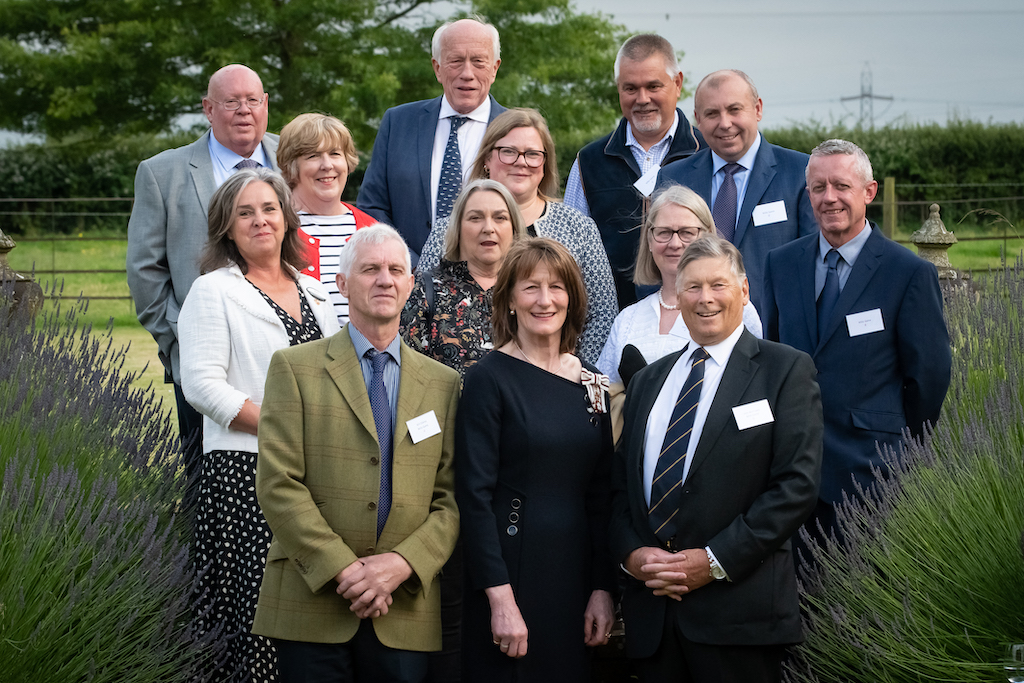2011 will certainly go down as a great year for fruits and nuts. Oak trees draped with deep brown acorns, hazel nuts hanging from hedgerows like grapes and the sweet smell of rotting fruit on lanes and footpaths. It is the last burst of energy before the trees slow down for the winter. The bounty is harvested by many of our native mammals, looking to fatten up before winter.
It is one of those wonderful autumn days in the Severn Valley. Fluffy white clouds are being blown across the sky by a brisk wind. Walking through the orchard, it is a bumper year for apples. With names like Worcester Pearmain, all the trees are local provenance and produce crisp and juicy fruit. Amongst the trees are two holes in the ground that have been filled with dung. In the dung I can see the remains of bright red fruit. It is, of course, a badger latrine. There is a welltrodden path leading through the orchard. The animals trudge through the moonlight each night at this time of year, to feast on the fallen apples. The latrines are located as territory markers.
As I walk from the orchard into the woods, there is a chill in the air and a deep covering of leaves on the track. Every gust of wind causes the branches of the trees to creak and groan and brings acorns raining down from the canopy, clattering off the woodland floor. After passing the forked ash tree, I walk up amongst the hazel coppice.
“I find a cavity that has obviously been the cosy resting place of a wood mouse”
Past the twisted old dead elm I find the first nest box. I block up the entrance hole and carefully open the box. A curled up millipede and a woodlouse are hiding under the lid. Inside the box I find the mossy remains of a bird’s nest. The second box I find is full to the brim with curled up brown oak leaves. Carefully placing my hand amongst the leaves, I find a cavity that has obviously been the cosy resting place of a wood mouse.
Despite checking all the nest boxes, I do not come across any of my intended quarry. The boxes were designed for dormice. They have the hole at the back of the box, next to the tree, as dormice spend their life in the canopy of the trees and feed on hazelnuts. They get their name from the French verb to sleep (dormir). Dormice fall into a deep winter sleep from mid-October right through until April or May! The dormouse boxes are often used by other small mammals and one can find the remains of nibbled nuts and fruits. Dormice leave characteristic-shaped teeth marks on the nuts that indicate their presence.
In a typical autumnal shift of the weather, a squally shower breaks out. I shelter under an old hazel stool. Mosses and lichens cover the gnarled boughs and the bark is beginning to peel off. The rain bounces off the sycamore leaves down the hill. The clay in this part of the valley is baked hard after the dry summer conditions and deep cracks have appeared. The ground is thirsty for this rain but a tawny owl calls out in protest. In wet conditions, these birds find it very difficult to hunt.
As I shelter against the tree, a grey squirrel runs along the branches above me looking for hazelnuts to eat. He suddenly spots me and is obviously startled to see something new in his territory. Immediately he starts to twitch his tail rapidly and make nasal alarm calls to warn other animals of my presence. He then proceeds to creep down the branch, constantly making the noise, until he is a mere 6 feet away. Once he has satisfied himself that I am no threat, he gets back to the important business of gathering autumn food.
So for some mammals, like dormice and hedgehogs, this time of year signals the start of hibernation. Others, like badgers and voles, use the time to ensure that they are in good condition to keep active through the winter months. For deer it is the main mating season, with the rut in full flow to determine the hierarchy of the herd.
“Ancient places like these are where the heartbeat of the earth feels strongest”
Darkness begins to envelop the woods. Some people may feel threatened in these conditions. But for me, ancient places like these are where the heartbeat of the earth feels strongest. The trees are arteries, the sap of the forest the life blood. The old heart is slowing now, chilled by the icy winds. But with spring the pulse of life will return and the woodlands will awaken.
Do one thing for wildlife this month:
When clearing fallen leaves from paths at this time of year, why not pile them up at the bottom of the garden to provide hibernation cover for mammals such as hedgehogs.
Attingham Park, near Shrewsbury, is a great place to get close to deer. Through November the National Trust Wardens take guided walks to show people the herd being fed. For more details see www.nationaltrust.org.uk/main/w-events-find_event





